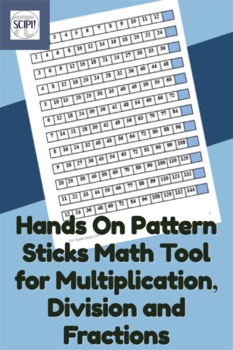Hands On Pattern Sticks Math Tool for Multiplication, Division and Fractions
- PDF
Description
This math resource contains five suggested ways to use Pattern Sticks for doing skip counting, practicing and learning multiplication facts, reducing fractions, and changing improper fractions to mixed numbers. It includes the following math topics on how to:
- Practice Skip Counting
- Determine What Number to Divide By
- Find Equivalent Fractions
- Reduce Fractions to lowest terms
- Change Improper Fractions to Mixed Numbers
Pattern Sticks are a visual way of showing students the many patterns on a multiplication table. Since the pattern sticks are moved around to help solve a problem, they are appropriate for the kinesthetic student as well. The pattern sticks work well in a regular classroom, but are also a very effective math tool for those with learning disabilities.
Also included in this resource are twelve Pattern Sticks that may be copied for the students to cut out and use. Download the Preview Version to view “Lesson C” and “Lesson D” as well as two sample Pattern Sticks.
You might also like these resources:
Also available on TPT is an 86 page fraction bundle:





